No More Melted Tomblerones Or Mising Skulls, Yyeann!
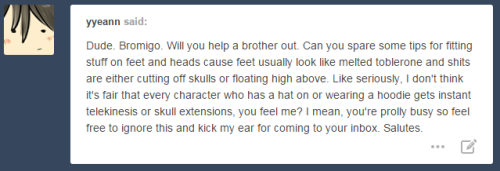
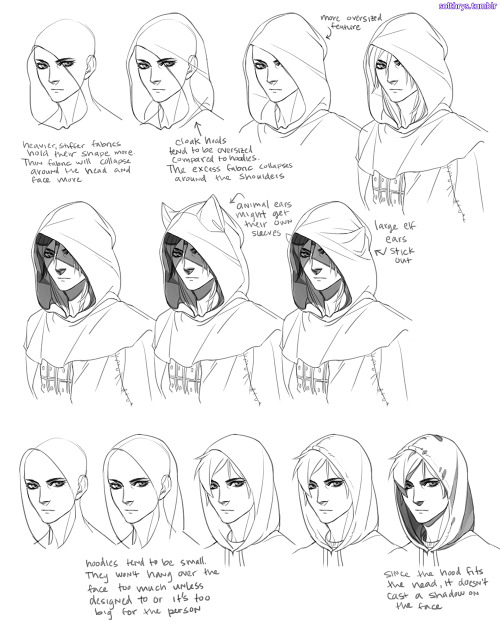

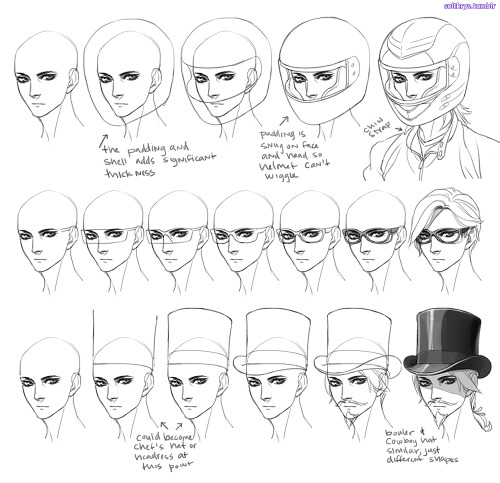
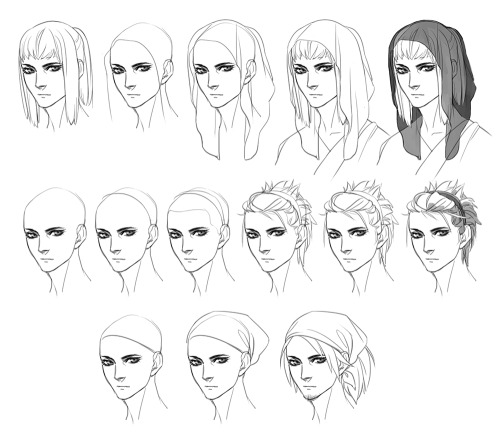
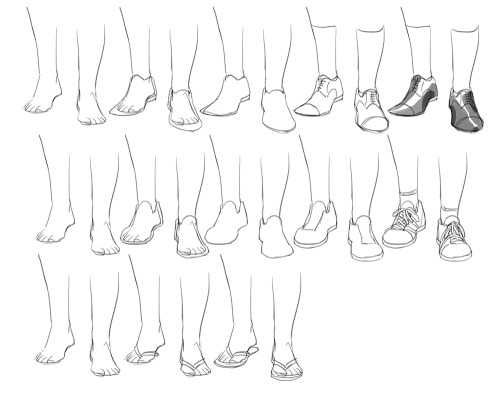
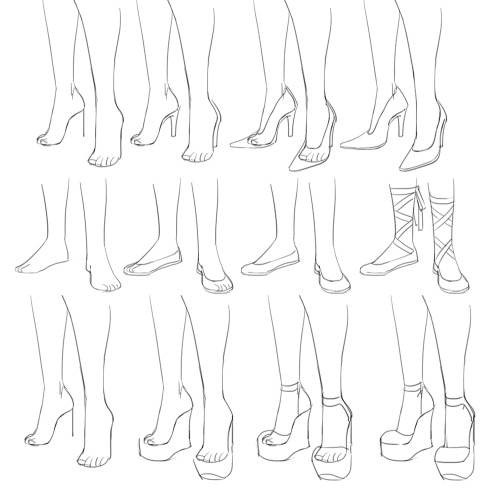
No more melted tomblerones or mising skulls, yyeann!
This is my basic process for pretty much everything I draw. The key is understanding the shape of the garment you’re trying to draw and the shape of the body part you’re putting it on.
Drawing the body first forces you to make the shoe, hat, or clothes fit that body. With practice you’ll be able to skip some steps. This method works the same no matter the perspective or pose. It just relies on your knowledge of what a hat looks like from above, or what the bottom of a shoe looks like. When in doubt, just google refs. Don’t necessarily need the exact angle you’re trying to draw. Look at different pics to give you an idea of how it works in 3d.
Shoes are always a bit tricky because feet are a stupid ass shape.
It might help if you think of hats as a cylinder fitted to the person’s head to help you get the perspective right before you push in detail. note: heads aren’t circles. they’re kind of egg shaped if you look at them from the top.
More Posts from Kunartis and Others





I'm currently doing an online art school program and I thought I'd share some notes on clothing pieces for anyone else whose like me and for some reason can't understand objects with free from lol I hope you find some of these observations/ notes useful for any of your art journeys!
for all the artists out there, here are my favorite resources i use to learn!
Files
The Complete Famous Artist Course
Art Books and Resources
Art, Anatomy, and Color Books
PDF Files of Art Books
YouTube
My YouTube Playlist of Tutorials
How to Draw Facial Features
Drawing and Art Advice
Drawing Lessons
Art Fundamentals
Anatomy of the Human Body
2D Animation
Perspective Drawing
Websites
Pinterest Board for Poses
Another Pinterest Board for Poses
Reference Angle
Figurosity
Sketch Daily
Human Anatomy
Animal Photo References
Humanae - Angélica Dass
Fine Art - Jimmy Nelson
Character Design References
CDR's Twitter Account
iamagco's Twitter Account
taco1704's Twitter Account
takuya_kakikata's Twitter Account
EtheringtonBro's Twitter Account
Drawabox
Color Wheel
Color Palette Cinema
Free Images and Pictures
Free Stock Photos
FILMGRAB
Screen Musings
William Nguyen Light Reference Tool
Animation References - sakugabooru
Animation References - Bodies in Motion

i made a character sheet. free to use as you wish, feel free to change whatever you want XD open source ass thing. spent all of ~maybe an hour on it.
Credit: the text in the insert-image box comes from this video, and the text for the top three lines (intense, complex, fruity) comes from this post. The actual image was made with the free NBOS character sheet creator, which is a sort of dated but free and solid text-layout sheet maker intended for ttrpg style character sheet creation.


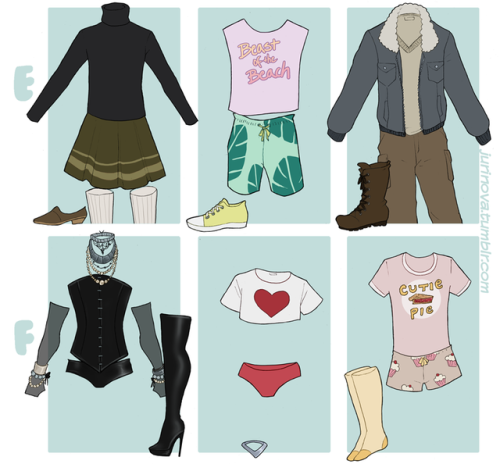


Send a character + outfit + accessory. Feel free to use and reblog, but please do not repost!
I made a new one. I hope you all like it!
Write Tension that isn't just Yelling or Guns
Listen, not all tension is someone holding a knife or screaming “I’ve had enough, Derek!” at a dinner party. Real, edge-of-your-seat tension can be quiet, slow, awkward, and still make your reader grip the page like it owes them money. So here are my favorite ways to sneak tension in like a gremlin under the bed...
╰ Unanswered Questions (That the Character is Actively Avoiding)
Tension isn’t always about what’s said—it’s about what’s not said. Let your character dodge questions, interrupt, change subjects. Let readers feel the silence humming between the lines. + Great for: secrets, internal conflict, emotional gut-punches.
╰ Time Pressure Without Action Pressure
A clock ticking doesn’t always mean bombs. Sometimes it means waiting for a test result. A letter. A phone call. A knock on the door. Tension = knowing something’s coming but not knowing when. + Great for: psychological suspense, horror, relationship drama.
╰ Small Talk That’s Not Really Small Talk
When two characters are talking about the weather, but both are secretly screaming inside? That’s tension. Give one character a goal (say the thing, don’t say the thing) and the other a defense mechanism. Now sit back and watch the discomfort bloom. + Great for: slow burns, rivalries, “we’re not talking about that night, are we?”
╰ Two Characters Who Want Opposite Things But Are Pretending They Don’t
Someone wants to leave. Someone wants them to stay. Someone wants to confess. Someone is acting like nothing’s wrong. Make your characters polite when they want to scream. + Great for: emotionally repressed chaos, family drama, enemies-to-lovers.
╰ One Character Realizes Something The Other Doesn’t
A power shift = instant tension. One person knows the truth. The other’s still talking like everything’s fine. Let that dread slow-cook. Readers love being in on the secret. + Great for: betrayal, secrets, foreshadowing plot twists.
╰ Body Language That Contradicts the Dialogue
They say “I’m fine,” but they’re picking their thumbnail raw. They laugh too hard. Their smile doesn’t reach their eyes. Show the cracks forming. Let the reader sense the dissonance. + Great for: all genres. Especially emotionally loaded scenes.
╰ Echoed Phrases or Reused Words That Hit Differently the Second Time
When a character repeats something someone else said—but now it’s laced with bitterness or grief? Chills. Callback dialogue is your best friend for building subtle dread or emotional weight. + Great for: heartbreak scenes, arcs coming full circle, psychological unraveling.
╰ Characters Performing a Role to Keep the Peace
Pretending to be “the good sibling.” Faking confidence in a boardroom. Playing therapist when they’re not okay themselves. Tension thrives when someone’s holding it together with duct tape and fake smiles. + Great for: internal conflict, layered characterization, slow unravelings.
i genuinely appreciate the effort, but that "non eyestrain" version of the cringetober prompt list is not in fact non eyestrain. try solid black text on a white background?

Sorry about that! Personally I find high contrast images even harder to look at, so I didn't consider the incredibly basic black text, white bg at first. I hope this works!!
-
 sonicfan8967 liked this · 1 month ago
sonicfan8967 liked this · 1 month ago -
 artrefsforstray reblogged this · 1 month ago
artrefsforstray reblogged this · 1 month ago -
 art-tips-tricks-inspo reblogged this · 3 months ago
art-tips-tricks-inspo reblogged this · 3 months ago -
 asleepyauthor liked this · 3 months ago
asleepyauthor liked this · 3 months ago -
 scarsofbeauty reblogged this · 3 months ago
scarsofbeauty reblogged this · 3 months ago -
 scarsofbeauty liked this · 3 months ago
scarsofbeauty liked this · 3 months ago -
 scarlettaagni reblogged this · 3 months ago
scarlettaagni reblogged this · 3 months ago -
 furbearingbrick reblogged this · 3 months ago
furbearingbrick reblogged this · 3 months ago -
 rhys-ravenfeather reblogged this · 3 months ago
rhys-ravenfeather reblogged this · 3 months ago -
 rhys-ravenfeather liked this · 3 months ago
rhys-ravenfeather liked this · 3 months ago -
 nezjazz reblogged this · 3 months ago
nezjazz reblogged this · 3 months ago -
 setrija-fuchsfreund reblogged this · 3 months ago
setrija-fuchsfreund reblogged this · 3 months ago -
 autisticdrizzt liked this · 5 months ago
autisticdrizzt liked this · 5 months ago -
 mytoonyvalentine liked this · 6 months ago
mytoonyvalentine liked this · 6 months ago -
 oniartx-blog liked this · 7 months ago
oniartx-blog liked this · 7 months ago -
 furyeclipse liked this · 7 months ago
furyeclipse liked this · 7 months ago -
 kunartis reblogged this · 7 months ago
kunartis reblogged this · 7 months ago -
 auggzustsyy liked this · 7 months ago
auggzustsyy liked this · 7 months ago -
 kuporef reblogged this · 8 months ago
kuporef reblogged this · 8 months ago -
 ye-old-references reblogged this · 8 months ago
ye-old-references reblogged this · 8 months ago -
 grimaussiewitch liked this · 8 months ago
grimaussiewitch liked this · 8 months ago -
 howaboutthisblr reblogged this · 8 months ago
howaboutthisblr reblogged this · 8 months ago -
 howaboutthisblr liked this · 8 months ago
howaboutthisblr liked this · 8 months ago -
 saltmatchescandlewax reblogged this · 9 months ago
saltmatchescandlewax reblogged this · 9 months ago -
 0sunnybea0 liked this · 9 months ago
0sunnybea0 liked this · 9 months ago -
 third-liver reblogged this · 9 months ago
third-liver reblogged this · 9 months ago -
 kira-quartz liked this · 9 months ago
kira-quartz liked this · 9 months ago -
 cryingbluecactus liked this · 10 months ago
cryingbluecactus liked this · 10 months ago -
 xcx-lazarius-xcx reblogged this · 10 months ago
xcx-lazarius-xcx reblogged this · 10 months ago -
 artking-4 reblogged this · 10 months ago
artking-4 reblogged this · 10 months ago -
 hiimsuperawkwarddontmindme liked this · 10 months ago
hiimsuperawkwarddontmindme liked this · 10 months ago -
 thedancingcat liked this · 11 months ago
thedancingcat liked this · 11 months ago -
 xsolar-ghost reblogged this · 11 months ago
xsolar-ghost reblogged this · 11 months ago -
 aerizworld liked this · 11 months ago
aerizworld liked this · 11 months ago -
 r-sweti reblogged this · 11 months ago
r-sweti reblogged this · 11 months ago -
 artutorial reblogged this · 11 months ago
artutorial reblogged this · 11 months ago -
 secretmagician liked this · 1 year ago
secretmagician liked this · 1 year ago -
 dimecowren liked this · 1 year ago
dimecowren liked this · 1 year ago -
 inspeeration reblogged this · 1 year ago
inspeeration reblogged this · 1 year ago -
 doll-eyes888 liked this · 1 year ago
doll-eyes888 liked this · 1 year ago -
 artreferencesarchive reblogged this · 1 year ago
artreferencesarchive reblogged this · 1 year ago -
 artreferencesvault reblogged this · 1 year ago
artreferencesvault reblogged this · 1 year ago -
 artking-4 reblogged this · 1 year ago
artking-4 reblogged this · 1 year ago -
 krourou2 liked this · 1 year ago
krourou2 liked this · 1 year ago -
 caramelmacciatobaby liked this · 1 year ago
caramelmacciatobaby liked this · 1 year ago -
 arctobic reblogged this · 1 year ago
arctobic reblogged this · 1 year ago -
 dysphvric liked this · 1 year ago
dysphvric liked this · 1 year ago -
 simeatsreblogs reblogged this · 1 year ago
simeatsreblogs reblogged this · 1 year ago






